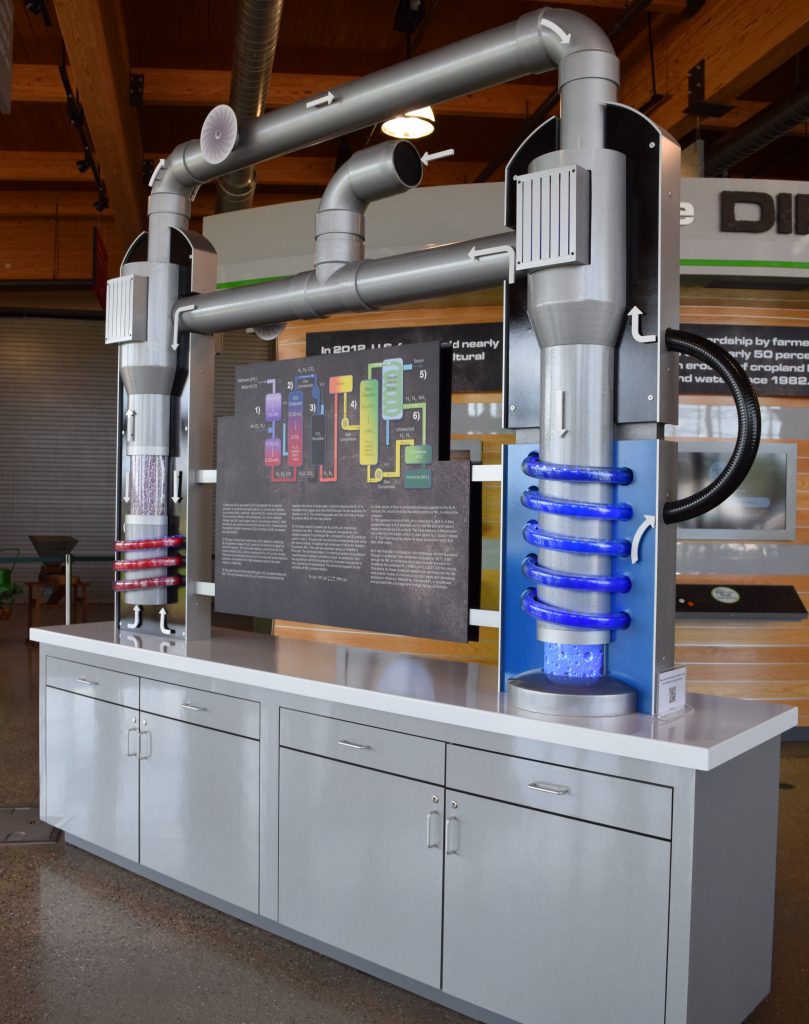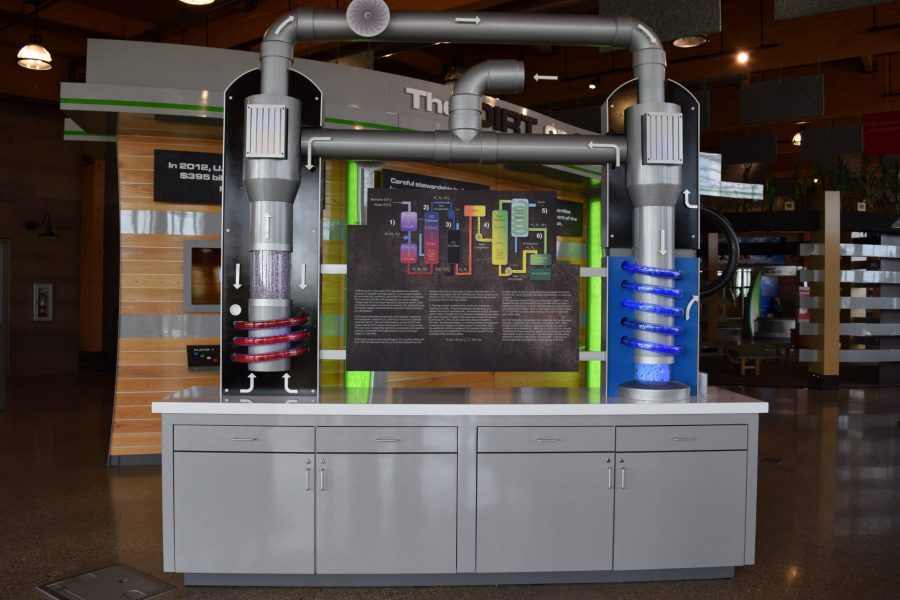We made a three-dimensional display for AgroLiquid’s IQhub museum that helps visitors visualize some of the chemistry behind fertilizers.
In the early 1900s, a couple of German scientists developed the Haber Process, a chemical process that enables us to produce the ammonia necessary for crop fertilizers. Basically, scientists can use it to take nitrogen from the air (which plants can’t use as fertilizer) and turn it into ammonia (which is plants’ main source of nitrogen).
Beyond that surface-level explanation, the Haber Process is a complicated sequence that involves piping different gases through pressurized pipes. As complex as it is, it’s foundational to modern agriculture. That makes it an important topic for an ag museum’s visitors to learn about.
This two-sided display uses light animation to show visitors how the process works. Lights travel through the different “pipes” in the structure to demonstrate the movement of chemicals. Arrows show the direction that the chemicals travel.
Along with the Haber Process demonstration, informational signs and graphics offer concise explanations of the chemistry and the history behind the Haber Process.





